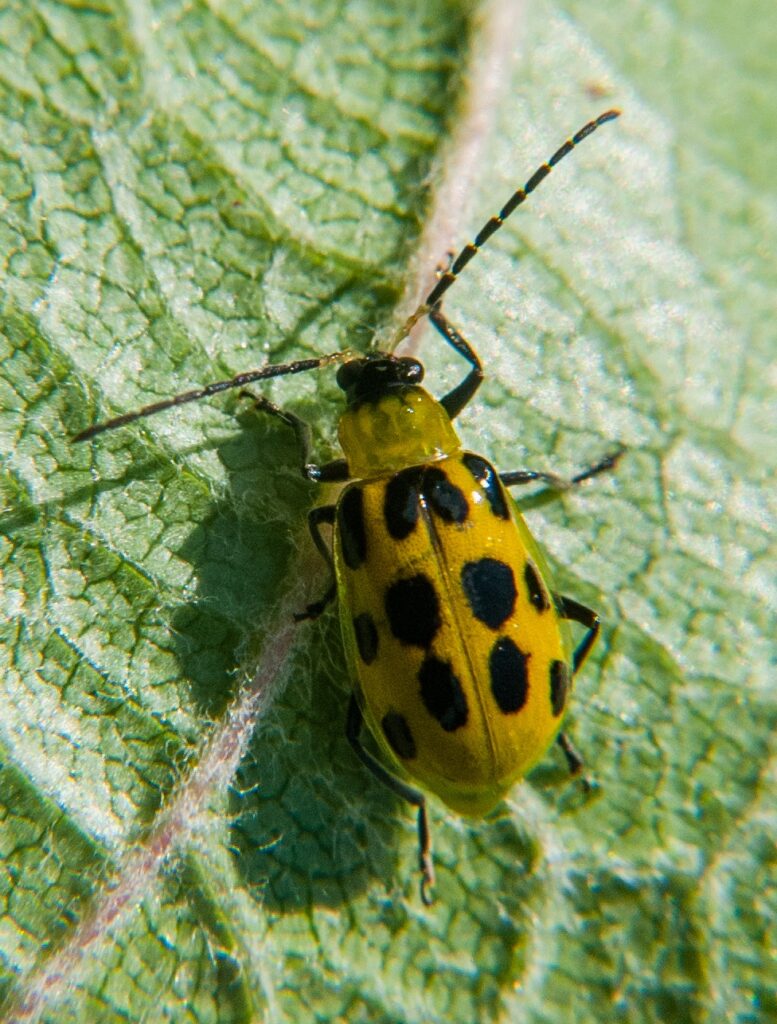Minimizing Next Season’s Pests
go.ncsu.edu/readext?1096335
en Español / em Português
El inglés es el idioma de control de esta página. En la medida en que haya algún conflicto entre la traducción al inglés y la traducción, el inglés prevalece.
Al hacer clic en el enlace de traducción se activa un servicio de traducción gratuito para convertir la página al español. Al igual que con cualquier traducción por Internet, la conversión no es sensible al contexto y puede que no traduzca el texto en su significado original. NC State Extension no garantiza la exactitud del texto traducido. Por favor, tenga en cuenta que algunas aplicaciones y/o servicios pueden no funcionar como se espera cuando se traducen.
Português
Inglês é o idioma de controle desta página. Na medida que haja algum conflito entre o texto original em Inglês e a tradução, o Inglês prevalece.
Ao clicar no link de tradução, um serviço gratuito de tradução será ativado para converter a página para o Português. Como em qualquer tradução pela internet, a conversão não é sensivel ao contexto e pode não ocorrer a tradução para o significado orginal. O serviço de Extensão da Carolina do Norte (NC State Extension) não garante a exatidão do texto traduzido. Por favor, observe que algumas funções ou serviços podem não funcionar como esperado após a tradução.
English
English is the controlling language of this page. To the extent there is any conflict between the English text and the translation, English controls.
Clicking on the translation link activates a free translation service to convert the page to Spanish. As with any Internet translation, the conversion is not context-sensitive and may not translate the text to its original meaning. NC State Extension does not guarantee the accuracy of the translated text. Please note that some applications and/or services may not function as expected when translated.
Collapse ▲One of the realities of living in a region with lots of sunshine, rainfall and humidity throughout the growing season is, equal to the diversity of crops that can be grown, is a wide variety of pest pressures that can be encountered. At the end of the season, insect and disease populations can be extremely high. Each pest organism will have unique characteristics related to how it is transmitted from one year to the next. As growers are taking stock of the successes and challenges of the season, this is also a ripe time for focusing on farming practices that deter insect and disease issues.
Remove Crop Debris
Months of heat and humidity result in healthy populations of insects, both beneficials and troublesome plant pests. Common insect pests like squash beetles, harlequin bugs, and cucumber beetles will be encountered every growing season. Field cleanup at the end of season is a simple but effective way to minimize overwintering populations. Being extremely thorough in removing crop debris from the field requires labor and time, but these efforts will pay off with reduced pest pressure the following year. If crop debris is collected in a compost pile on the farm, it’s important to ensure that adequate moisture and temperature levels are met to fully decompose this plant material. If not, this collection of crop leaves and stems can create a nice overwintering habitat for insect pests.
Cover Crops
Cover crops are essential for soil conservation, nutrient management, and habitat for beneficial organisms, yet some species may create overwintering habitat for pests. Cover crops in the Brassica plant family – including radishes, mustards, and rapeseed – benefit the whole farm ecosystem. They effectively suppress certain plant diseases and nematodes. Unfortunately, they can also attract insect pests like harlequin bugs. If you’ve had a particularly problematic insect issue, do your homework on how those pests overwinter, what crops they prefer, and be prepared to either switch cover crops, or be ready to take action to control those pests before your cash crops are planted.
Field Sanitation Minimizes Disease
Disease pathogens can also carry over from one season to the next. While some diseases are spread early in the spring by wind and rain, common diseases like early blight (Alternaria species) and powdery mildew (several species are problematic) can overwinter on plant debris left in the field.
Early blight is a problem on potatoes, tomatoes and peppers. While growers see signs of this disease every year, managing plant debris at the end of the season is critical to ensure little carryover from this season to the next. If disease pressure has been very high, it may be best to burn the affected plant material rather than composting, to ensure the pathogen won’t survive.
The same is true for plants affected by powdery mildew, which can impact many different crops, and can overwinter on crop debris or on wild plants adjacent to production areas. It’s important to survey field borders, windbreaks, and hedgerows for weed or wild plants that may also exhibit disease symptoms. If observed, that plant material should also be removed to reduce disease buildup.
Crop Rotation and Disease-Resistant Cultivars
This year’s wet and humid growing season allowed many insects and diseases to flourish. In preparing for next year, it is essential to maintain good field sanitation. If specific diseases wiped out certain crops, take the time to look for disease resistant cultivars that may be better options for next year. Incorporate crop rotation into your production planning. This can be tricky on small or micro-sized farms, but doing so can minimize exposure to plant pathogens that may have overwintered. Lastly, if you are using tunnels, greenhouses or other season extension structures, don’t forget to keep a close eye on disease symptoms in these environments. Cull diseased plants as soon as they are identified, and survey overwintered plants closely before spring plantings.
These simple steps can go a long way in helping reduce overall pest pressure as a new growing season unfolds.They are part of a farm’s larger system utilizing Integrated Pest Management (IPM).





